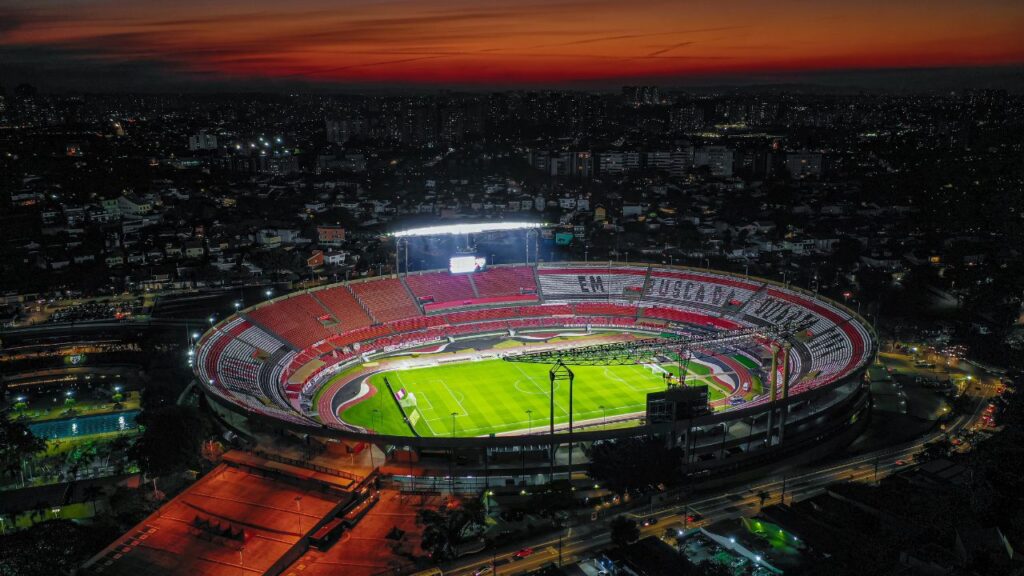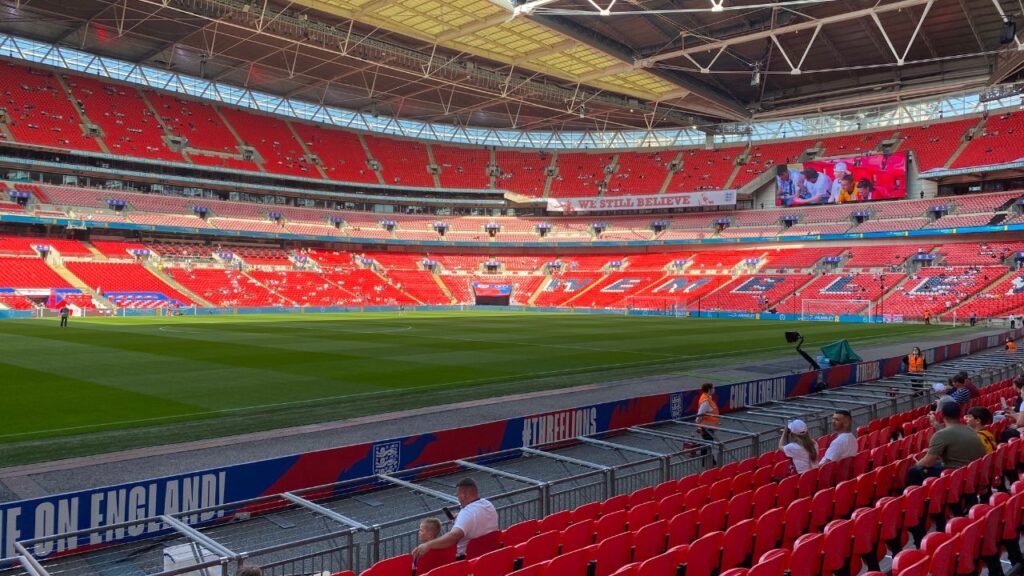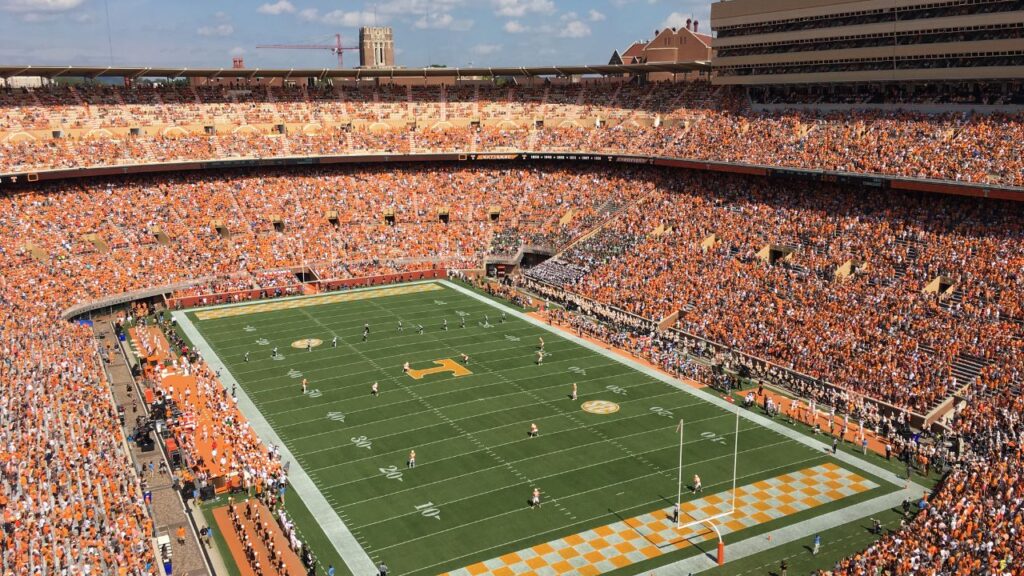Football stadiums are more than just grounds where matches unfold — they are vibrant realms where passion breathes, history lingers, and identities are forged. These iconic arenas carry tales of legendary victories, heartbreaking defeats, and awe-inspiring rivalries, transforming every game into an emotionally charged saga. From the towering stands of Camp Nou to the historic arches of Wembley, each stadium embodies a unique spirit that resonates far beyond the pitch. Fans flock from all corners of the globe not simply to watch football but to partake in a shared culture pulsating with energy and tradition. What makes these stadiums truly legendary isn’t just their architecture or capacity, but the soul imbued by fans, the cultural imprint they carve, and the unforgettable moments they host. As the beautiful game marches through the 21st century, stadiums evolve, marrying innovation with heritage, thriving as bastions of community spirit and emotional drama. Ready to explore these captivating theaters of football greatness? Let’s dive deep into the unique elements that elevate certain stadiums to legendary status.

The Cultural Heartbeat of Legendary Football Stadiums
Football stadiums serve as the beating hearts of communities, transcending their physical role to become symbols of identity, pride, and belonging. Take the renowned Camp Nou in Barcelona, a colossal arena that stands as a monument to Catalan culture and aspiration. On match days, the city pulses with an unmistakable buzz: streets flood with fans clad in team colors, united in celebrating a collective identity. But such emotional ties are not confined to Catalonia. From Old Trafford’s theatrical aura embodying Manchester’s industrial heritage to Rio de Janeiro’s Maracanã, where samba rhythms intertwine with football’s heartbeat, stadiums mirror the spirit of their locales.
Interestingly, communities often rally around stadiums as more than venues; they become rally points during social and political moments. The architectural grandeur of these arenas is matched by their social resonance, shaping festivities and day-to-day life alike. Football’s magnetic pull fosters a pilgrimage-like devotion, where attending a match is steeped in ritual, symbolism, and cultural transmission.
Football brands – think Nike, Adidas, Puma, and Under Armour – have recognized this cultural impact, developing fan apparel that goes beyond sportswear into identity markers. Jerseys and sneakers sported outside stadiums are badges of belonging, linking the physical stadium experience with daily life and social interactions, underscoring how football culture extends far beyond the pitch.
- Stadiums act as cultural hubs, connecting diverse fans through shared passion.
- Match days transform cities with parades, chants, and community events.
- Football brands play a key role in expressing fan identity in urban and global contexts.
- Such arenas help preserve local traditions whilst embracing global football culture.
This symbiosis of community, culture, and football starts at the stadium gates and permeates far beyond. It’s why stadiums like Wembley don’t just host matches — they host collective memories that ripple through generations, forming indelible parts of national and global heritage.
Architectural Marvels: How Design Defines Legendary Stadium Experiences
Step inside any legendary stadium, and the architectural design immediately shapes the experience — from the roar of the crowd to the atmosphere that feels almost tangible. Stadiums like the Allianz Arena in Munich dazzle not only for their modernity but for how design fosters fan involvement. Its glowing facade changes color based on the home team, turning the exterior into a living scoreboard that amplifies local pride.
Contrast that with the historic layers of San Siro in Milan — a stadium steeped in tradition, featuring iconic spiral staircases and a towering presence that stands as a testament to the sport’s revered heritage. Each stadium weaves functionality with storytelling, inviting fans to feel a centuries-old narrative or bask in cutting-edge innovations.
Design Elements That Enhance Fan Experience
- Seating capacity and sightlines: Larger stadiums like Camp Nou, with nearly 100,000 seats, ensure every fan feels close to the action despite the scale.
- Acoustics and crowd noise: Designs amplify chants, making moments like Liverpool’s anthem “You’ll Never Walk Alone” at Anfield legendary.
- Technological integration: Modern stadiums incorporate giant digital displays, high-speed connectivity, and in-seat services that turn match day into a full sensory experience.
- Accessibility and comfort: From VIP lounges to inclusive seating, studios like Tottenham Hotspur Stadium set new standards for fan comfort and engagement.
Iconic Architectural Features and Their Stories
| Stadium | Architectural Highlight | Cultural Significance | Notable Events Hosted |
|---|---|---|---|
| Camp Nou | Largest seating capacity in Europe (~99,000) | Symbol of Catalan identity and pride | Numerous El Clásico matches, FIFA World Cup 1982 |
| Allianz Arena | Illuminated, color-changing facade | Innovative design reflecting team colors | UEFA Champions League Finals, Bundesliga matches |
| San Siro | Iconic spiral staircases and twin club sharing | Cultural landmark in Milan’s football history | Champions League matches, World Cup games |
| Wembley Stadium | The massive arch | National symbol of English football excellence | FA Cup Finals, UEFA Euro Finals |
Architecture is more than aesthetics here; it’s an integral part of how memories are crafted. It influences crowd dynamics, the energy coursing through terraces, and how fans connect emotionally to every play. This marriage of history and modernity encapsulates the spirit of football’s past and future.
Unforgettable Atmospheres and Fan Experiences that Define Legendary Stadiums
What truly sets legendary stadiums apart is the atmosphere — that electric, soul-stirring vibe that makes every goal, tackle, and save feel larger than life. Fans pack these venues as if they are warriors ready to erupt in unison. At Anfield, the thunderous singing of “You’ll Never Walk Alone” embodies this unique communal power, a phenomenon that has echoed through decades and continents.
The emotional highs and lows inside stadiums become shared human experiences, weaving an invisible fabric linking strangers as lifelong comrades. The sheer volume of sound, the visual spectacle of coordinated chants, and the raw display of passion create sensory overloads that only football can cultivate. Think of the Maracanã, steeped in history and vibrancy, or the San Siro, where the spirit of two rival clubs converges to electrify the stands.
- Fan rituals, including pre-match parades and post-match celebrations, build anticipation and community.
- Unique chants and songs that become anthems of identity and pride.
- Matchday food, merchandise, and social gatherings foster a festival atmosphere.
- Player-fan interactions during moments of triumph or despair deepen emotional bonds.
Truly immersive fan experiences inspire loyalty and define a stadium’s legacy. They reflect local traditions, club histories, and even global football culture, amplified worldwide by social media and broadcast. Brands like Reebok, New Balance, Lotto, and Umbro play subtle yet vital roles by outfitting fans, bridging fashion with fandom in the modern age.
Stadium Evolution: From Historic Foundations to Futuristic Innovations
The journey of football stadiums is a fascinating evolution where tradition meets groundbreaking innovation. Early stadiums prioritized mass gathering, often sacrificing comfort. Consider Maracanã, which once held over 200,000 fans during the 1950 World Cup — a colossal symbol of football’s massive reach but with scant attention to modern amenities.
Fast forward to today’s arenas, like Tottenham Hotspur Stadium with its state-of-the-art moving pitch and SoFi Stadium in Los Angeles boasting a jaw-dropping 360-degree video board and transparent roof. Such advancements redefine what it means to attend a match — merging entertainment, connectivity, and environmental consciousness.

Key Milestones in Stadium Development
- Early 20th Century: Construction of large-scale concrete stadiums emphasizing capacity (e.g., Old Trafford, San Siro).
- Mid to Late 20th Century: Enhanced facilities for spectators, introduction of seating, and basic amenities.
- 21st Century: Integration of technology, improved comfort, and multipurpose designs.
- Present and Beyond: Focus on sustainability, smart stadium technology, and fan engagement innovations.
| Era | Stadium Examples | Innovations | Fan Impact |
|---|---|---|---|
| Early 1900s | Old Trafford, San Siro | Concrete structures, large capacity | Massive crowd gathering, limited comfort |
| Mid 1900s | Maracanã, Wembley (original) | Seating introduction, basic amenities | Improved spectator experience |
| 21st Century | Allianz Arena, Tottenham Hotspur Stadium | Digital displays, Wi-Fi, luxury facilities | Enhanced atmosphere, fan engagement |
| Future | The Line Stadium (proposed) | AI, sustainability, virtual reality integration | Personalized, eco-friendly fan experiences |
Looking ahead, stadiums are poised to become arenas where virtual reality and AI-driven ambiance adjustments personalize every visitor’s experience. Ecological architecture will dramatically reduce environmental footprints, aligning football with global sustainability goals. The unfolding story of stadiums promises to keep alive the unyielding passion of football’s past while pioneering its future.
Exploring the Legendary Legacy and Global Influence of Iconic Football Stadiums
The legacy of iconic football stadiums transcends sports, extending into the realms of culture, politics, and international influence. Wembley, often dubbed “The Home of Football,” represents a stage where history was made — England’s 1966 World Cup triumph remains etched deeply in national memory. Similarly, Maracanã has hosted moments of drama that echoed far beyond Brazil’s borders, embodying the soul of South American football.
Stadiums foster unity amid diversity, offering common ground for people from all walks of life. They are arenas where brands like Asics and Hummel gear up athletes and fans alike, translating football’s reach into sportswear fashion and cultural trends. Beyond hosting local derbies and World Cup clashes, these stadiums drive tourism revenues, shape cities’ global images, and sustain football’s vast cultural economy. In many ways, the stadium experience links fans worldwide.
- Iconic stadiums encapsulate historical milestones influencing generations.
- They serve as cultural ambassadors, fostering international camaraderie.
- Economic drivers for their cities via tourism, merchandising, and events.
- Football fashion trends linked to stadium presence impact global markets.
For beginners and seasoned fans alike, understanding the cultural and historical gravitas of these venues enriches the appreciation of football beyond the game itself. The energy you feel when stepping inside these stadiums is a gateway into a world of storytelling, tradition, and global football unity, beautifully explored in detail at Football Unity: Uniting Cultures and RKT Football.
